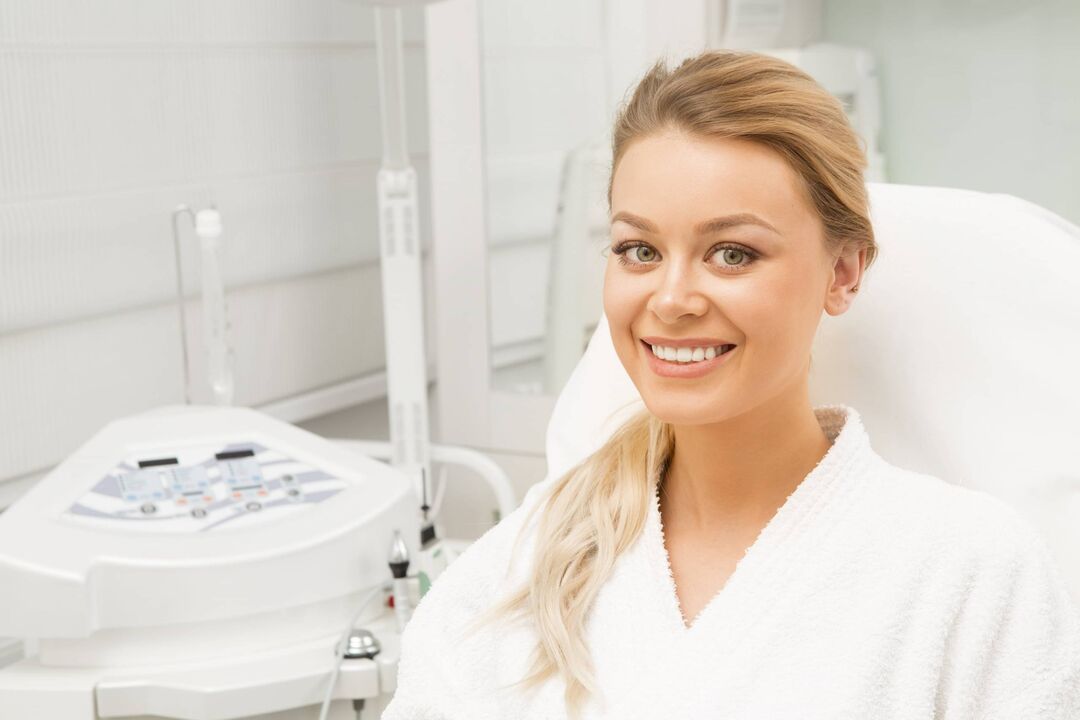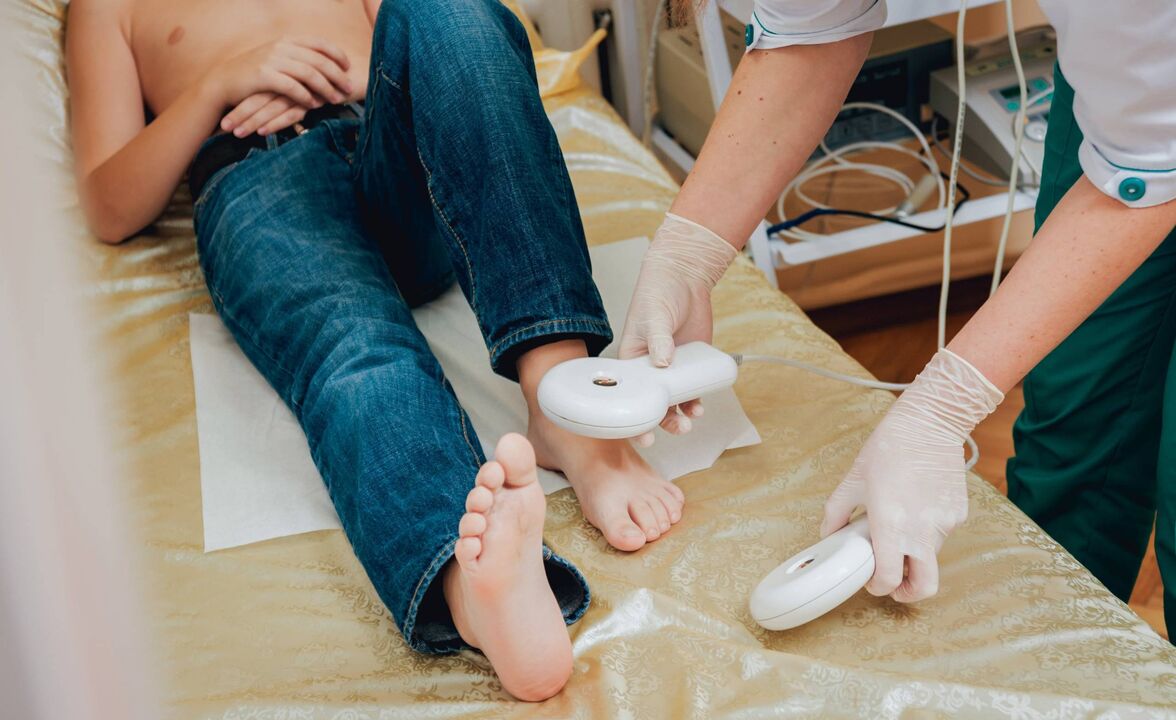Nail fungus - an infectious disease that affects the nail plate. In a severe shape of the electricity, it goes to the skin roller and can spread to other areas. The activation of the pathogenic microorganism is possible when you visit public places while wearing tight shoes with weakened immunity and injuries.
About the beginning of the development of the disease, a change in the color of the affected area, the expansion of the nail, the brittleness, pain, peeling and an unpleasant smell indicate a change in the color of the affected area. The diagnosis includes bacterial particles from the affected area, histology, the cultural examination, the blood test. Medicine treatment. In some cases, surgical intervention is required.
Contrary to the opinion that the shoes of a person whose nails are affected by a fungal infection should be thrown away, this is not the case.
It must be treated with a special apparatus that releases radiation inside ultraviolet and kill mushrooms.
It can also use a 40%solution of vinegar diluted in water. The shoes are wiped out from the inside with the resulting composition and placed in a sealed bag for several hours.
What is nail fungus
Despite the fact that onychomycosis (a fungal infection of the nail) is not a danger to life, this is an important problem in public health care due to high prevalence and therapeutic difficulties in connection with high indicators for relapse and progression of chronic lesions. It has certain consequences for patients such as complaints and painful reactions.
Dermatophytes are usually responsible for onchomycosis in countries with moderate climate. They destroy keratin and absorb his nutrients and represent hyaline septic shapes. The gifs of these mycelic organisms penetrate into the stingy skin and nails.
Pilgk cells produce keratinolytic proteases that offer a way to get into living cells. Some species are mainly papers that acquired the ability to digest keratized particles and develop so that they were able to parasitate the keratin tissue from animals.
The term "dermatophytosis" is used to describe the infection by members of the microsporator, trichophytes and epidermophytes. Types that most often cause onychomycosis - red trichophytes, trichophytes -Mentagrofitest- and rag -defined epidermophytes (pathogenic epidermophytosis): The first two are involved much more frequently than causal factors.
Only one red trichophyte is responsible for more than 80% of onychomycosis. Skin, hair, nail infection with incomplete shapes (hikers and scopulariopsis) are referred to as "dermatomycosis". Both dermatophytes and incidents are the only etiological means of onychomycosis.
The infection begins with the discoloration and deformation of the nails that cause pain and make their haircut more difficult. In patients with complicated factors, this leads to damage to the surrounding tissue and can contribute to a secondary bacterial infection.
In addition, recent studies have resulted in the psychological, social and professional consequences of the disease, which are underestimated by health experts in treating this state.
Doctors find that nail fungus is a common problem that can affect people of all ages. The main symptoms are a change in the color of the nails, their thickening and brittleness. Experts emphasize that an important aspect of treatment is early diagnosis, since advanced cases may require longer and more complicated treatment. Depending on the degree of damage, doctors are recommended to use both local and systemic antifungals. In addition, they concentrate on the need to adhere to hygiena characters and preventive measures, such as: It is also important to note that the fungus can be transferred from person to person so that common bathrooms and showers should be avoided.
How do I treat nail fungus?
statistics
Mushroom damage on nails is subject to 5 to 15% of the population. With age, the prevalence of the pathological process increases to around 30%after 65 years. However, it is worth noting that the fungus often occurs in children.
About every 10 years the incidence rates rise around the 2, 5 -fold. At the same time, it is only 3%in childhood, while the adult population reaches up to 60%.
In contrast to women, men are more affected by men. In addition, the pathological process concerns 3-7 times more often than the upper limbs.
All types of parasitic mushrooms are combined with 3 groups.

Scratch for skin fungus
The lesion of the mushroom is one of the most common pathologies that belong to skin diseases.
In 80% of the patients, the disease develops against the background of reproduction of dermatophytes.
Explosives parasites are located 5 times more often on the hands of the nails. Molds are the rarest species.
In people with diabetes mellitus, the incidence rate is three times higher. In 90% of people with psoriasis, the probability of infection also increases 2 times.
Reasons
The risk factor is contact with the source of infection. For example, trichophytes infected verrucosum that develop from ancestors living in the ground, farmers, agricultural workers, veterinarians. It is transmitted through direct contact or bite, although cases of infections were also registered in the laboratory.
Several factors that were unique in modern life led to the prevalence of onychomycosis. This includes:
- TightenShoesin high heels;
- With common usewetSpace (as a shower and changing rooms);
- Deterioration in healthagingPopulation;
- An increase in the number of people with weakened peopleimmunitydue to diseases (e. g. HIV infection);
- TherapeuticActive substances (immunosuppressants, therapy after operation, the use of broad spectrum -antibiotics);
- straightInjuryNails, including certain teak disorders (biting nails);
- GeneticallyPredisposition.

Treatment of nail fungus with a laser
Laser therapy for nail fungus is an effective hardware method that accelerates the recovery.
True fungal infections can be found much more often on the nails of the toes than on the nails of the fingers. This is due to the fact that they are exposed to larger friction and sweating. Socks and shoes contribute to a dark and damp mushroom environment.
The causes can be poor peripheral blood circulation, diabetes, repeated nail injuries, inability or inability to cut the nails correctly on the legs and to properly supply them. The risk increases with age and the underlying disease of the nails.
Many people face the problem of nail fungus, and opinions are very diverse. Some argue that this is not only an aesthetic problem, but also a serious illness that requires an attentive approach. Many share their treatment with treatment and talk about various medication and folk remedies. Some notice that the fungus can return after successful treatment, which leads to disappointment and fear of re -infection. Others emphasize the importance of prevention and advise them to monitor hygiene and avoid public places with high humidity. In general, a discussion about nail fungus is often accompanied by tips and recommendations that indicate the prevalence and relevance of the problem in society.
Nail fungus. Treatment of the neglected form of nail fungus
Guy
The prevalence of nail fungus varies worldwide due to several cultural and socio -economic factors. It depends on the geographical rice, population, mycological characteristics and diagnostic methods.
Four types of onychomycosis were identified, which are characterized by a clinical manifestation and an invasion path.
Distal and lateral U -boot -onychomycosis
In most cases it is observed and is almost always due to a dermatophytic infection. It has a proximal effect on Hyponichie, often along the edges of the side pages, which leads to Sub -Hpherdia and onchilolysis, although the nail plate is initially not affected.
It can be limited from one side and spread on the side, covered the entire nail and continues steadily until it reaches the rear nail roller.
In the end, the nail plate becomes loose, can split, often due to an injury, although the destruction is most likely associated with the invasion with dermatophytes with keratolytic properties. The examination of the surrounding skin almost always shows signs of dermatophytosis.
Superficial white onychomycosis
This is a dermatophytic infection caused by Trichophyton Mentagrofitest. A less frequent type affects the surface of the nail plate, which won a whitish color and noticeably peeling peeling peeling (onycholysis is no characteristics of onchiomycosis)).
It happens that an incorrect diagnosis can be made if it is taken for "keratin granulations" (reaction to nail polish). To confirm, it is necessary to carry out a laboratory test.
Proximal tray onychomycosis
A rare form of dermatophytic infections, which are often associated with intercourse diseases. The pathogenic mushroom penetrates into the nail plate of Eponichia and the matrix of the nail. It occurs in immunosuppressive patients.
Candidiasis onychomycosis
Another name is the infection of the nail with yeast Candida, classified by:
- chronicParonichiawith secondary dystrophy of nails;
- chronicCandidiasisMucous membrane;
- DistalinfectionNails;
- secondaryCandidiasis.

Nail fungus prevention
The mushroom of nails and feet is an infectious disease caused by pathogenic bacteria.
The distal infection with yeast is rare (in patients with Raynaud disease or another form of vascular failure).
Chronic Paronichie occurs in raw conditions. The swelling of the rear nail fold is secondary in terms of chronic wet state. The cuticle that separates from the nail plate loses waterproof properties. Microorganisms enter the subcutaneous space and provoke the swelling of the rear folds.
The chronic mucus loop candidiasis covers the mucosal membranes, which is caused by a decrease in cellular immunity. The clinical signs vary depending on the severity of immunosuppression. In severe cases, the nail is fully thickened.
Secondary candidal onychomycosis occurs due to a number of nail diseases, mainly psoriasis.
All dystrophic onychomycosis is used to describe the disease of the nails in the last stage, even though some clinicians consider them for a separate subtype. It can be the end result of one of the four main models for onchomycosis.
Symptoms
The most common symptoms of the mushroom are the expansion of the nail and the change in white, black, yellow or green. If the infection from the starting level goes into a neglected form, it becomes fragile, the parts are broken off. If you do not treat, the skin is inflamed, injured or peels off under the nail and around. There is an unpleasant smell.
Onychomycosis in patients with weakened immunity is a very serious health problem. Not only a severe infection serves as a constant memory of the patient of his own deteriorated condition, but it is also possible to transfer mushroom pathogens to another person.
Diagnosis
The clinical representation of deformed nails should warn the doctor of the possibility of onhomycosis. However, since mushrooms are the cause of only half of all lesions, it is necessary to be careful to correctly identify the signs and symptoms of other diseases that simulate onychomycosis correctly and differentiate between different etiologies.
This includes psoriasis, lichens, bacterial infections, contact dermatitis, traumatic onichestrophy, congenital Pachionichie, Gelbnagel syndrome, idiopathic onycholysis. A repeated nail injury can lead to Distal Oncholis colonization of the damaged area with microorganisms that create its pigmentation.
The use of suitable diagnostic methods includes:
- Smear,Palassium hydroxide treated with potassium hydroxide;
- SelectionMushroom cultures (from the selected material: course or fragment of the nail);
- Histology.
The first step in sampling is a thorough cleaning of the nail area of pollutants (bacteria) alcohol. Since the places of invasion and localization of infections differ in the types of onchomycosis, different approaches are practiced in order to obtain optimal samples depending on the presumed diagnosis.
Treatment
The main goal of treatment is to destroy the body proven by microscopy and culture. Clinical improvement - secondary and based on a strict system for assessing the anomalies of the nails.
It is important to admit that the successful destruction of the mushroom does not always lead to the right form of nails because they can be deformed with infections.
The main treatment methods are relevant or oral antifungals:
- paintThey consist of a fungically effective amount of an antifungal antifungal in a transparent, stable, film -forming medium. When using the nails, the composition offers a solid, transparent, waterproof film.
- OrallyPreparations that fall directly into the bloodstream and move through the liver improve the likelihood of solving the problem. However, they have side effects and can cause negative reactions in combination with other drugs.
The main task is the determination of mycosis and the provision of relevant treatment. At this stage, some relevant medication will only be in development and testing in development and tests. Those who are available on the pharmaceutical market cannot offer a complete guarantee of healing.
In order to overcome the restrictions of conventional compositions, an effective system is required that can give antifungals deeply into the nail.
For example, chemical (keratolytic) processing of the affected area improves, which apparently improves the results. Keratolytic active ingredients such as papain, urea and salicylic acid are used to improve the penetration of antifungal.
prevention
Everyone is closest to see their nails and can quickly see changes. Even in the event of a fungal infection, compliance with preventive measures is strongly recommended. After the daily washing, the legs are wiped thoroughly, especially between the fingers.
It is preferable to wear cotton socks, use good powder or leg spray. Nails should be cut properly. Both manicure and pedicure can be useful and sometimes enable you to really get rid of organisms (in the early stages of the infection).
In the past decade, significant success in the development of effective and safe medication has occurred, but the nail fungus will probably remain a disease of modern civilization that is difficult to eliminate. Environmental conditions that contribute to this are associated with life expectancy and an increasing number of people with weakened immunity.
Perhaps today's most important task is the exact diagnosis of a causal remedy that enables the selection of an optimal antifungal drug, the activity spectrum of which covers the infection of microorganisms.
Question answer
What is the most effective remedy for the mushroom on the nails?
The active substance of naphthyfin hydrochloride quickly penetrates into the lesion, destroys pathogenic microorganisms on a cellular level. The solution and nail polish contains amorolphin hydrochloride.
How do I remove the mushroom on my nails at home?
If you have a week for a week, it is recommended to produce baths for the legs in warm (37-38 degrees Celsius) water with the addition of sea salt (100 g) or a pinch of citric acid (50 g per 5 liters of water). Since the mushroom is afraid of the acid environment, such therapy helps to reduce the amount of mushroom cells on the skin of the legs and on the nails.
What does the mushroom have on the nails?
What does the mushroom have on the nails? Onychomycosis may not expose to baked salt, hydrochlor solutions, hydrogen peroxide and temperature exposure above 60 degrees.
Is it possible to heal nailed piling and soda?
Solutions for vinegar, soda, iodine, Celandine or herbal infusions are often used with nail fungus. However, these funds can only solve a superficial problem. If the mushroom has already entered the nail bed and the matrix, folk methods are useless. On the contrary, they often provoke inflammation and irritating soft tissues.
Advisor
Council No. 1
Spend the condition of the nails regularly. Pay attention to changes in color, texture and shape of the nails. Early detection of the mushroom will help avoid its spread and make it easier to treat.
Council No. 2
Mront your legs in dryness. The mushroom prefers a wet environment. So try to wear breathing shoes and change socks as often as possible, especially after physical activity or in hot weather.
Council No. 3
Avoid public places with high humidity such as saunas, pools and changing rooms. If you still have to go there, use special protective shoes or slippers to minimize the risk of infection.
Council No. 4
Contact the doctor at the first signs of the mushroom. Do not mediate yourself because improper treatment can make the problem worse. A specialist can prescribe effective medication and make recommendations for nail care.


















